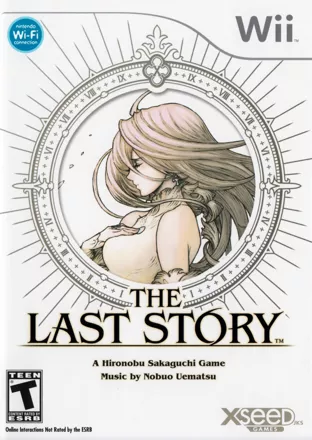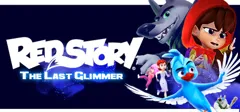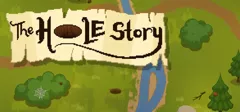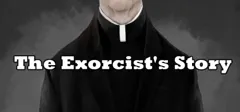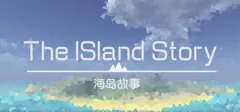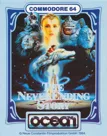The Last Story
Description official description
Lazulis Island, location of the like-named harbour town of Lazulis City. A band of mercenaries, headed by Zael and his surrogate brother Dagran, come in search of work. They are given a task by the governing Count Arganan, which will take Zael and his band of mercenaries across the expanse of Lazulis Island and then beyond, over the ocean.
The Last Story is an action role-playing game based around handling what the enemies focus on. The player controls Zael directly, giving commands to the rest of the party, who will draw the attention of any enemies he attacks. Other enemies may or may not focus on him, and instead focus on other members of the party. By attacking these enemies, Zael can draw their attention away from his allies.
The game features two multiplayer modes. A co-operative mode, where up to six players can complete missions together, and a competitive mode, where as many players battle each other until only one of them remains standing.
Spellings
- ラストストーリー - Japanese spelling
Groups +
Videos
Add Trailer or Gameplay Video +1 point
See any errors or missing info for this game?
You can submit a correction, contribute trivia, add to a game group, add a related site or alternate title.
Credits (Wii version)
388 People (371 developers, 17 thanks) · View all
| Director | |
| Producer | |
| Composer | |
| Developed by | |
| Concept Art | |
| Program Lead | |
| Art Lead | |
| Game Design Lead | |
| Screenplay | |
| Animation Lead | |
| Animation | |
| Character Lead | |
| Character | |
| [ full credits ] | |
Reviews
Critics
Average score: 79% (based on 89 ratings)
Players
Average score: 4.4 out of 5 (based on 15 ratings with 1 reviews)
The Good
The Last Story is the latest creation from Mistwalker, a company formed by Final Fantasy series creator Hironobu Sakaguchi after parting ties with Square. Perhaps sensing the lack of RPGs on a system that was largely being neglected by his former company, and lacking the budget to realize an epic on the HD systems, Sakaguchi designed and developed The Last Story with Mistwalker as if it was the last game he would ever make. The resulting product doesn’t have the sharpest gameplay design, the most original story, or the latest and greatest in graphics. Indeed, it sometimes feels like a patchwork of strange ideas thrown together that aren’t fully formed. But what it does have is heart, charm, and a lightness of touch and a mastery of pacing and detail, and these make The Last Story one of the year’s best games, one that’s as compelling as anything you’ll play elsewhere.
Taking place in an unidentified medieval fantasy setting, The Last Story centers around a group of mercenaries who have arrived to Lazulis Island. The main protagonist, and the player’s character for much of the game, is Zael. While out on a routine mission clearing some monsters in a cave, Zael finds a special power. This power might be the key to saving a dying world from an ancient enemy, yet there are those among the Lazulians who wish to take advantage of the power to further their own ways. The storyline is melodramatic and heavily clichéd, yet it still manages to remain compelling thanks to surprisingly solid voice acting and well-drawn characters, each of which have clear personality traits, backstories, and interactions. There was even a twist near the end that surprised me. My only complaint is that The Last Story has a Return of the King-style ending. What I mean by this is that after you win the final battle, there is a very lengthy epilogue with at least 3-4 different places where you think that the game would end, yet it keeps going. This was very annoying, though you certainly can’t complain about the lack of closure.
While the story is fine on its own, the real reason you’ll keep playing the game is the battle system. The Last Story’s combat is heavily action-based, playing like a cross between a third-person shooter and Final Fantasy. You take control of Zael while up to five allies are commanded by the computer. Simply walking into an enemy allows Zael to begin fighting it. However, if you want to cause the most damage, you’ll have to get creative and use Zael’s special skills, of which there are a number. Zael can take cover behind pillars and walls, and pop out to fire his crossbow at enemies, or use the cover to initiate a surprise attack. Meanwhile your allies will fight alongside you, casting magic circles on the ground which you can then destroy to cause status effects and damage. This system would be a chaotic mess if it weren’t for two things.
First is Zael’s power, which is called Gathering. When Gathering is active, all enemies still in play focus their attention on Zael, leaving your allies free to attack without fear of getting hurt. You can use Gathering to “lead” enemies around the field, herding them into places which are most advantageous to you. You can also use it to revive downed allies, and later, release a small but powerful burst of energy after taking damage during the Gathering.
Second is the ability to control the actions of all computer allies after a certain point in the game. If you need them to do something specific, such as attack a certain target with magic, or run away from an especially dangerous enemy, you can press the up button after your blue gauge has been completely filled to select the next actions of your party members. Doing this allows the magic users to cast the spells you selected much faster, making this a great strategy to use when you’re in a bind. The combat is incredibly rich and dynamic, and discovering all of the things you can do with it is half of the system’s fun.
The game’s world isn’t quite as impressive as the battle system, but it’s decently sized and packed full of little secrets and sidequests to do. There’s an arena you can fight in to hone your skills. There are several characters that you can help by finding ingredients for them. You can also upgrade all of your equipment as well as buy and trade various goods such as eggs and sugar. You can find ingredients for dyes, which allow you to alter the appearance of each of your party members in a variety of ways. Similar to the casual trading simulation Tradewinds from many years ago, you buy products when prices are low and sell them when prices are high. You can try your hand at selling all of your unwanted junk by running your own shop in the market for a few minutes, enticing passerby to come and buy your goods. You can find additional chapters to complete outside of the main storyline. There’s even a Zelda-style item trading sidequest.
In addition to the single player campaign, there is also an online multiplayer feature, a true rarity both for RPGs and Wii games in general. Multiplayer mode uses a similar combat engine to the single player, albeit with some alterations to compensate for it being an online game. Though you might not get to use all of the abilities that you have in single player, the multiplayer makes up for this by giving you the option to play as any of the characters, even enemy characters. There are two modes: Deathmatch and Co-Op. Deathmatch is your standard defeat-everybody-else gameplay scenario that’s been the lingua franca of online gaming ever since the Internet was invented. You can play deathmatch in both Free-for-All and Team modes, and I honestly had more fun with the latter than the former simply because the combat engine is decidedly balanced towards teams rather than individual members. That’s why the second mode, Co-Op, is the much more popular of the two. This mode allows you to take down bosses with up to five other players, all working together. You’ll want to have a balanced team in order to have a chance of winning, but it makes for a great challenge, especially when you have the full six players fighting at once. It’s not the reason to play the game, but it complements the single-player well and gives you motivation to play beyond the main storyline.
It doesn’t feel like the dated hardware held back Mistwalker’s artistic vision for the game’s graphics and sound. At times, The Last Story feels like something you could find on the PlayStation 3. Production values for The Last Story are unusually high for the Wii. Nearly every conversation between you and your party members, as well as a few other key players, is fully voiced. The graphics are richly detailed. While the art style is not the most colorful you’ll find, it’s a bold, bright and vibrant look that still manages to maintain some level of realism. Much of the game’s world is gray or sepia, with small, bright flashes of color, such as flags, streetlights, and cloth, giving the game a striking appearance. There are an insane amount of little touches, including birds that fly away from you when you near them, visible sun rays that filter in through windows, a depth-of-field effect that blurs objects close to the camera, and even realistic lemon physics. Even the animations when you bump into other characters are very convincing, and look almost as if they are using the Euphoria character physics engine. The menu system is a treat to look at, with menu panes zooming in and out of your viewpoint in space and clear large fonts and buttons foe every option. Finally, the music is pretty solid. Though not always memorable the compositions are pleasantly enjoyable and don’t intrude on the game experience, minus a few exceptions
The Bad
As impressive as the game’s visuals are, they have an unfortunate tendency to push the Wii too hard. Slowdown is frequent, both in battle and especially cutscenes, sometimes to your detriment as the controls become seemingly unresponsive. Even on the home screen, some effects can still be seen running in the background, something that never happens during other Wii titles. The small open-world hub city is especially taxing on the little white box. There is frequent pop-in of distant buildings and occasionally other characters, and frame rate drops are frequent. The biggest offender has to be a sidequest that requires you to chase down a thief who stole a woman’s item. During the chase, the hardware can’t load new buildings into view fast enough, so you’ll end up catching the thief in a floating blue airspace where you can see the skybox, the citizens, and nothing else. This wasn’t a one-time fluke, either. I had to retry the quest several times, and the un-loaded city occurred in exactly the same place every time.
Mistwalker may have forgotten that they were developing for Wii, as the game makes no use of the system’s unique features. There are no motion or pointer controls to be found anywhere in the game. While I think the inclusion of these would have irked some players, one area of the game really suffers without them: aiming. Instead of aiming using a pointer, you have to use the nunchuk’s analog stick instead, which is much more clunky.
Finally, the game's difficulty tends to lean towards the easy side just a little too much. You and your allies are given five lives each during battle before KO status, which gives you a game over or renders an ally down for the count for the remaining duration of the battle. I think the game is too generous with lives. Couple that with the fact that you don’t have resources such as MP or potions to mess with and staying alive in battle is much easier than it is in other RPGs of this type. However, the end game is so challenging, even frustrating, that it washes much of these complaints away. But for the most part, people who are looking for a super hard and especially lengthy RPG would do better to look elsewhere.
The Bottom Line
Don’t let the inconsistent framerate and easy gameplay bother you, though. The Last Story is one of the best games you’ll find on Wii. A rich, lengthy, and thrilling adventure, Wii titles rarely come better than this. And it’s a game I almost didn’t get to enjoy. I have to thank the fan campaign Operation Rainfall for helping the Last Story reach American shores. Without them, there would have been no way to properly play this title.
Wii · by krisko6 (814) · 2012
Trivia
Blog
In mid 2010 there was some confusion in response to a post on Mistwalker's official blog about the development team’s latest proceedings in Japanese, that The Last Story could be Hironobu Sakaguchi's last work and that he may retire after the game's release. However, after the official English translation of the same post a few weeks later, it turned out that Mr. Sakaguchi's comments about the game being his last were merely a figure of speech and that he'd rather treated it as if it were his last.
Operation Rainfall
A large fan campaign called Operation Rainfall was formed in order to convince Nintendo of America to localize The Last Story, Xenoblade Chronicles, and Pandora's Tower. Though all three games were eventually released for American markets, it is unclear how much of an impact the campaign had on Nintendo of America's decision to do so.
Analytics
Upgrade to MobyPro to view research rankings!
Identifiers +
Contribute
Are you familiar with this game? Help document and preserve this entry in video game history! If your contribution is approved, you will earn points and be credited as a contributor.
Contributors to this Entry
Game added by CrankyStorming.
Additional contributors: msl, Harmony♡, Kayburt.
Game added January 10, 2012. Last modified March 21, 2024.
